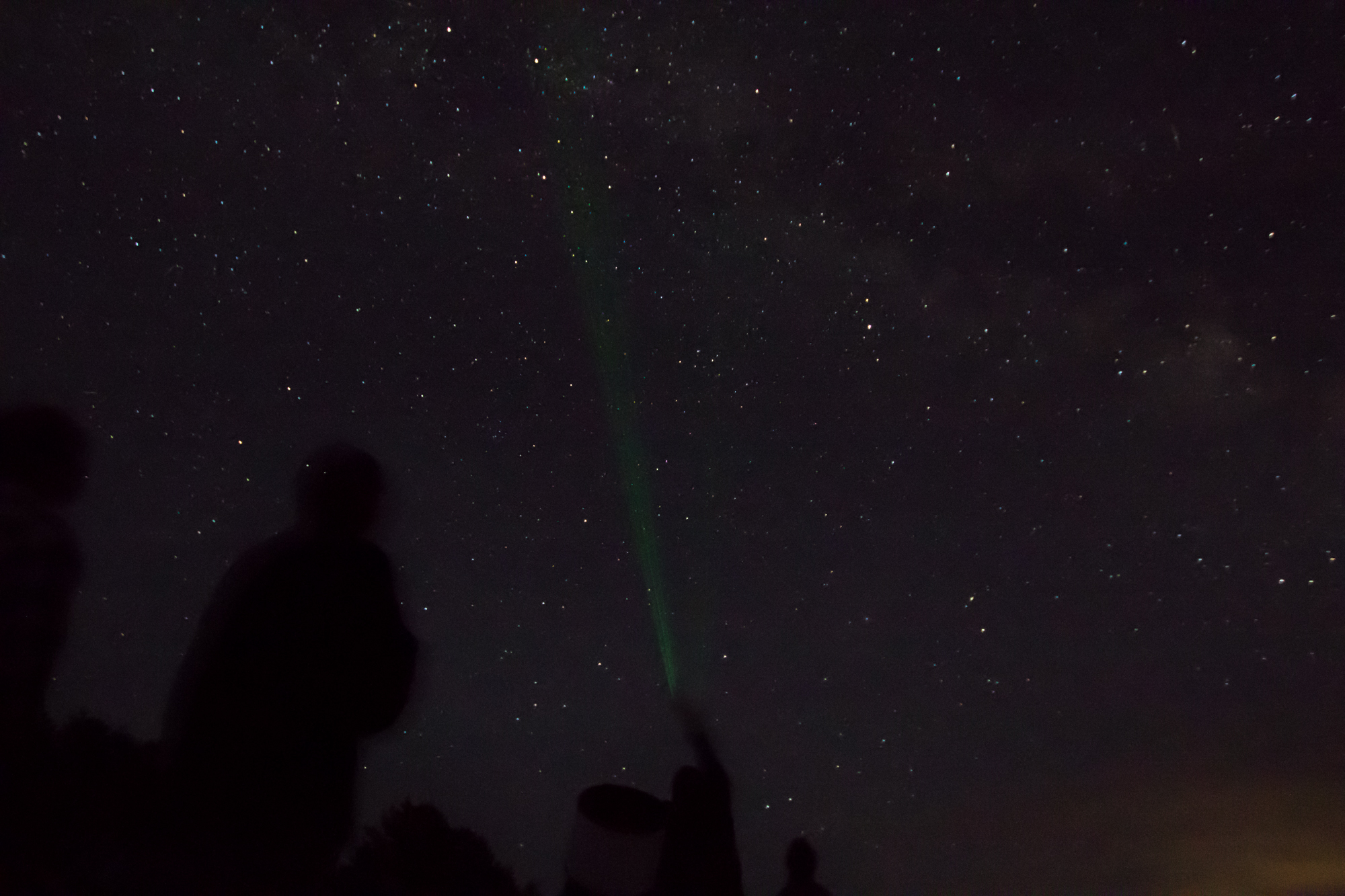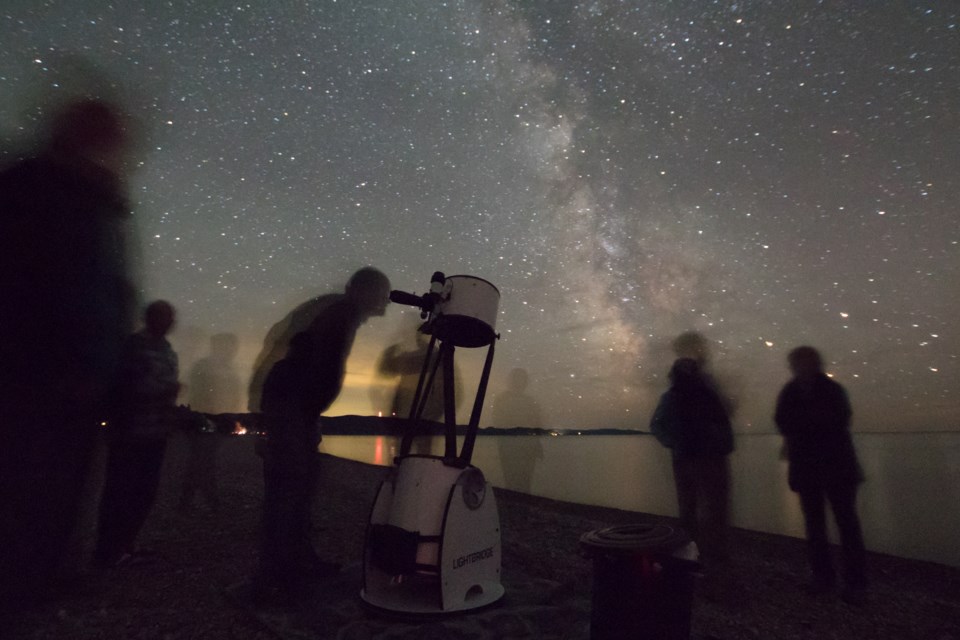You’ve heard of nature preserves but what about dark preserves?
If Jeffery Deans of the Algoma Astronomers club is successful, we may have one just north of the Sault in 2017.
The club is working an application to the Royal Astronomical Society of Canada (RASC) to have Lake Superior Provincial Park granted ‘dark sky preserve’ for 2017, Canada’s 150th anniversary.
Dark sky preserves are places that are especially good for viewing stars because they are unaffected by urban lights that tend to create a haze in the sky, lowering the contrast of the night sky.
This is type of light is called ‘light pollution’ and it’s increasing each year, especially with the spread of high powered energy efficient LEDs.
“Unfortunatly the wealth gap is growing and the middle class is shrinking. As cities grow so is light pollution and fewer and fewer people are able to escape the cities to get to dark skies and places like Lake Superior Provincial Park where you can actually see the Milky Way,” said Deans.
When it’s clear out, the night sky at the park is dazzling.
The Orion Spur of the Milky Way, planets, the Northern Lights, and endless stars populate a vast sky that extends over the largest lake in the world.
Deans has a ‘sky quality meter’ that determines how dark a sky is by measuring the contrast between stars and the universes’ infinite blackness.
 Deans has a laser that can point out to stars in the night sky during a beachside presentation at Lake Superior Provincial Park on September 3. Jeff Klassen/SooToday
Deans has a laser that can point out to stars in the night sky during a beachside presentation at Lake Superior Provincial Park on September 3. Jeff Klassen/SooToday In the Sault (this year) Dean gets readings of 18.5 (don’t ask about the unit of measurement) but out at Lake Superior Provincial Park his best reading has been 22.13 – which based on the scale he’s using is actually about eight times as dark.
Deans compared this with 21.85 reading he took at Natural Bridges National Monument in Utah, a place often considered the one of the best darks skies in North America.
Lake Superior Provincial Park isn’t quite as good of a spot though because, being low and on a lake, it has more humidity than the Utah park which is quite high and dry.
Still, the reading is quite telling of the park’s night sky quality.
Deans said that Lake Superior Provincial Park is one of the best places along the Trans Canada Highway to see the northern lights.
However, Deans doesn’t think the park will be the especially ideal for telescope users but more of a great place for general enthusiasts, particularly those into astrophotography.
“It’s the fastest growing field (in astronomy). A great thing is that a $400 camera you can get at Best Buy is quite capable of getting great shots if you know what you’re doing,” he said.
Dark Sky Preserves are RASC designated areas that meet a number of conditions.
Among the criteria for a dark sky preserve is that it has to be dark, it has to have by-laws or plans in place to remain that way, it has to have public outreach programs like lectures or events organized around night skies, and it has to reach out to nearby municipalities and encourage them to reduce their light pollution as well.
Deans said Lake Superior Provincial Park is perhaps the darkest provincial park in Ontario, at least the darkest one he’s been too, and it seems to be meeting all the other criteria as well.
For example, concerning public outreach, the park already does public presentation on astrology, constellation tours, talks on Ojibwa sky lore, and it has a space program that relates to the topic as well.
Deans work also wants to raise concerns about the effects of LED lighting.
Many LED lights contain a quality of blue light (that appears white) that is harmful to how melatonin is produced in the brain, leading to sleep problems and other associated health risks.
In 2016 the American Medical Association stated that certain LED lighting has “harmful human and environmental effects.”
Although more energy efficient, LED lights are often much brighter.
Deans said that in just the last year, since PUC has started installing LED street lights in the city, his light sky quality meter reading dropped from 19.5 to 18.5, which on his scale means the skies are about half as dark.
Another project Deans would like to see started is the creation of an ‘urban star park’ in the city – a place not as dark as a Dark Sky Preserve but still a good spot for star gazing.
He said a location like Kinsmen Park, where the treeline blocks most city lights, would be ideal.
On Saturday during a beach-side stargaze at Lake Superior Provincial Park, people were invited to peer through Deans’ telescope looking at the Orion Spur of the Milky Way, Saturn, The Lagoon Nebulae, and the Globular Cluster in Hercules.
Tonight he’ll be doing a presentation on the Dark Sky Preserve program and light pollution at the park’s Visitor Centre followed by star gazing on the beach.
“The constellations are sacred to so many people like the Ojibwa who are the traditional inhabitants. It’s so important to them culturally and if we don’t protect places like this there is going to be nowhere left to where we can see them,” said Deans.
